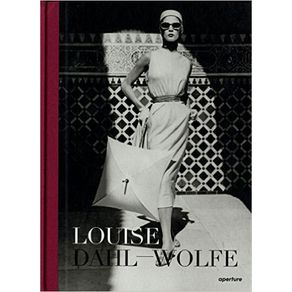"Louise Dahl-Wolfe" opens a window onto the work of one of the most influential fashion photographers of the 20th century. After being discovered by Edward Steichen and having her work exhibited at The Museum of Modern Art, New York, in 1937, Dahl-Wolfe went on to revitalize the Hollywood portrait and invigorate the fashion photography of the 1930s, '40s and '50s. During her tenure at "Harper's Bazaar"--which lasted over two decades, and during which time she worked with Diana Vreeland--Dahl-Wolfe pioneered the use of natural lighting in fashion photography, shooting on location and outdoors. Her modernist outlook changed American visual culture, influencing a school of artists--namely Richard Avedon, Horst P. Horst and Irving Penn. Spanning over 30 years, this survey takes into account Dahl-Wolfe's work not just in fashion, but also in portraiture and nude photography. Today, she stands among some of the most prestigious photographers of her time, including Steichen, George Hoyningen-Huene, Erwin Blumenfeld and Martin Munkacsi, with a mastery of the genre that still resonates with fashion and portraiture lovers alike. Louise Dahl-Wolfe (1895-1989) began her career making pictures in 1923. After studying at the San Francisco Institute of Art, she moved to New York and opened a photography studio, which she maintained until 1960. In 1936 she was hired as a staff photographer at "Harper's Bazaar," and over the next 30 years revolutionized fashion photography through her editorial and personal work. Her work has been exhibited at the Grey Gallery at New York University; International Museum of Photography, Rochester, New York; Center for Creative Photography, University of Arizona, Tucson; and Fashion Institute of Technology, New York, among others.



